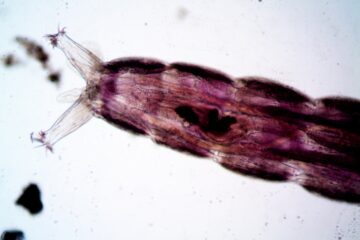![]()
Our fingerprints don’t fade from the lives we touch.
Judy Blume
Introduction:
Palmar surfaces of the hands and the feet have friction ridges. These ridges are the raised portions of the skin. These are known as epidermal ridges. These ridges follow different directions giving rise to multitudinous patterns. And these marks are the creator of the fingerprints.[1]
These are the identification of a person. Every person on this earth has different fingerprints. Also, they never change and are the same for their whole life. The fingerprint is a tool of a person’s individuality to reveal identity.
Generally, crime cannot be done without hands and hands leave marks which become the prime evidence in an offense committed. These prints cannot be curtailed easily and play an important role while solving a crime. Human fingerprints are idiosyncratic, unchangeable, and resistant.
Classification[2]
- The Arch: Rarest fingerprint (5% of the total population in the world). It does not show characteristics like lines, deltas, cores. It has two types-
- Plain Arch: Raised ridges and extend from one side of the finger to the other in a continuous fashion.
- Tented Arch: This arch has a sharper edge which is in a tent shape.

- The Whorl: 25%-35% population possess such fingerprints. They have a core and two deltas. It has two types:
- Plain Whorl: This is a circular pattern showing a swirl or spiral. The pattern is unbroken and is formed with a single line.
- Central Pocket Whorl: Here the ridges are curved more than one time to form a small circle.

- The Loop: 60%-70% person possesses such a fingerprint pattern. In this fingerprint, there is at least 1 core and 1 delta. It has 3 types:
- Ulnar Loop: Here the ridges turn backward, don’t make a full turn. Turn point towards the small finger.
- Radial Loop: Here, the turns point thumbs.
- Central Pocket Loop: Ridges re-curve to surround the central whorl.

Medico-Legal Aspects
Forensic science is a complex ecosystem, from which far-reaching advancements have been strong forces to reckon with, because of its ability to deliver many demands of the justice system is the application of the methods of the natural and physical sciences to matters of criminal and civil law. It is applied in the investigation and prosecution of many crimes, including rape, murder, and has seen its application in civil matters as well, for instance in ascertaining the authenticity of a document, handwriting, etc. Usage of Forensic Science as evidence has become an increasingly important Forensic tool used by the prosecution in their goal of establishing the guilt of an accused. This is, among other reasons, owing to their accuracy. While not all Forensic tools are equally accurate, they have, nonetheless, become a persuasive piece of evidence in Courts across the country.[3]
Fingerprint identification is an important part of a criminal investigation due to its persistence and uniqueness. The epidermal ridges in the skin of palms and soles develop in the 4th month of Intra-Uterine Life and they remain with us forever and never change. Hence, they are a piece of perfect evidence to differentiate people based on their fingerprints.
In the legal aspect, the purpose of collecting these prints is to find the accused, suspect, or witness. Three types of fingerprints can be:
- Latent: Such prints are made of sweat and oil on the skin’s surface. These are visible to naked eyes.
- Patent: Such are made of blood, grease, ink, or dirt. It is easily visible to the human eye.
- Plastic: These are 3D impressions and can be formed by pressing fingers in fresh paint, wax, soap, or tar. Its visibility can be done through the normal human eye and no additional process is required.
Recognition of Fingerprints in Statutory Laws in India
Identification of Prisoners Act, 1920
Main objective- The act is to provide legal authority for the collection of measurements of prints of hand and foot, photos of accused or suspect. Before this act taking prints of suspects and accused was void.
Criminal Procedure Code, 1973
This code talks about the examination of the victim and accused both. Sec 53, 53A, and 54 provide for the same. Sec 239 also, talks about the report submitted by the Director of Forensic Bureau.
Indian Evidence Act
The characteristics of fingerprints have allowed its recognition as admissible evidence in an offense committed. Sec 45 the act the phrase finger impression was inserted by amendment act of 1899. Sec 73 also of the same act talks about giving fingerprints if asked by the court for comparison.
Evidentiary Value
Under Section 73 of the Indian Evidence Act, 1872, the Courts have the power to direct any person in the Court to write any words or figures to enable the Court to compare the words or figures so written with any words or figures alleged to have been written by such person. This section applies also, with any necessary modifications, to finger impressions.[4]
Under Section 45 the opinion of such an expert becomes a relevant fact. Besides Fingerprint experts, this section also covers those cases where the Court has to form an opinion upon a point of foreign law or science or art, or as to the identity of handwriting.
Section 51, whenever the opinion of any living person is relevant, the ground on which such opinion is based also becomes relevant. Under Section 159, an expert may also refresh his/her memory by reference to professional treatises
Case Laws
Bhaluka Behara and others vs State[5] – it was held that the science behind Forensic Fingerprints has developed to the stage of exact science, the main thing to be scrutinized is whether the Expert’s examination is thorough, complete, and scientific.
Also, it must be settled law that giving thumb impressions or footprints will not be included in self-incriminating evidence under Article 20(3) of the Constitution of India, 1950.
The Supreme Court case of Sonvir vs The State of NCT of Delhi[6], which disagreed with such a proposition, and held that non-framing of any rules under Section 8 by the State Government does not prohibit the exercise of powers given under Sections 3 and 4 of the Act. It also held that, although Sections 3 and 4 are adduced with the condition of “prescribed manner”, in a case where no such manner has been prescribed, by way of Rules, the authorities as empowered under Sections 3 and 4 are not denuded of their powers to act under Sections 3 and 4; “Absence of rules under Section 8 does not mean that Magistrate’s permission is mandatory”.
In Selvi and others vs The State of Karnataka,[7]Supreme Court said that involuntary administration of BEAP and Polygraph test cannot be held together with Testimonial compulsion otherwise it will be outside the scope of Article 20(3).
Also in Re Sheik Muhammad Hussain,[8] Madras High Court said that the fingerprints acquired by the police officer at the time of investigation for usage in the trial will not amount to testimonial compulsion under Article 20(3). It will be accepted as evidence.
Conclusion
The study of fingerprinting is extremely old disclosure. One of the fundamental significances of fingerprints is that it helps in setting up the personality of an individual with the least time and endeavors and afterward empowering quick examination. The unique finger impression proof has alluded to a solid piece of proof. They are additionally long-lasting and don’t go through any change. The court needs to frame an assessment solely after the conversation or after being worried about a specialist.
While conceding fingerprints the court ought to be adequately cautious to concentrate on the reasons which are given by the master. These feelings made by specialists help the court in reaching the last inference in regards to current realities. These assessments guide the courts and to choose the issues; eventually, the court needs to utilize his lawful brain according to the issues in question. Throughout the year’s fingerprints have assumed a significant part in recognizing the charged and granting them with disciplines.
References:
[1] Vasudha Dubey, Fingerprints: A Forensic Tool For Criminal Investigation, Legal Service India E-Journal, https://www.legalserviceindia.com/legal/article-2463-fingerprints-a-forensic-tool-for-criminal-investigation.html (Last Visited- 20/10/2021)
[2] Jackson Williams, 3 Major Types of Fingerprints | Find Out the Various Types of Fingerprints, Attorney At Law Magazine, (February 4, 2019), https://attorneyatlawmagazine.com/various-types-fingerprints (Last Visited- 20/10/2021)
[3] Chinmayanand, Evidentiary value of Forensic Fingerprints in India, 3 International Journal of Law Management & Humanities 1801, 1801(2020)
[4] Section 73, The Indian Evidence Act, 1872
[5] AIR 1957 Orissa 172
[6] (2018) 8 SCC 24
[7] (2010) 7 SCC 263
[8] AIR 1957 Mad 47



0 Comments